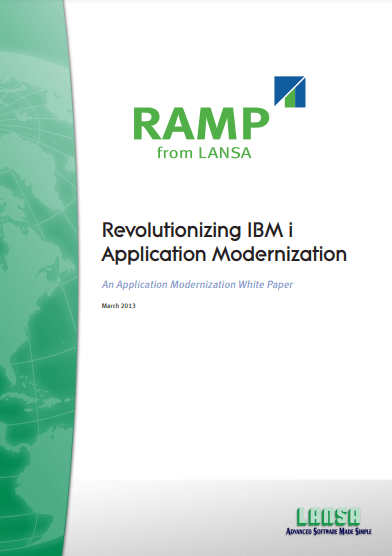As the Fourth Industrial Revolution — Industry 4.0 — gains momentum, most businesses see the benefits of implementing the technologies driving the transformation. Even those business leaders who previously thought automation was unreliable understand its necessity. Simply put, automation is now a necessity for any organization that seeks a modern standard of efficiency and productivity.
Table of Contents
Is there an automation perception controversy?
Every day new reports showcase the real-life results of automation projects in various fields and business processes. As a result, automation is commonly seen as a magic solution capable of driving business KPIs through the roof.
With most cutting-edge innovations and trending technologies, however, the reality lies somewhere in the middle. When implemented correctly, automation solutions can undeniably provide multiple business benefits. They can boost productivity, improve cost-efficiency and empower organizations in countless ways. Unfortunately, automation and digital transformation projects can also end up being outright failures. Done incorrectly, automation projects may not only fail to deliver any measurable improvement, but they may also disrupt business processes and cause substantial financial losses. Application modernization projects are prime locations to deploy automation.
What are 5 reasons why automation projects fail?
There are multiple reasons why organizations fail at automation. Let’s consider several key issues that business leaders and IT decision-makers pursuing digital transformation frequently overlook.
Unrealistic expectations
Beginning with the obvious, unrealistic expectations are a key contributor to failed automation and digital transformations. The media bombards us with stories about the power of automation. Under pressure to keep up with the latest trends, stakeholders start to think about Industry 4.0 technologies as a cure-all. This misplaced enthusiasm often results in automation projects greenlighted based on high hopes and nothing else. Needless to say, with this approach, the business results rarely live up to expectations.
A lack of vision and a poor long-term automation strategy
In addition to unrealistic expectations, a lack of vision, clear end goals, and long-term strategy often leads to poor results when it comes to implementing automation projects. Automation for the sake of automation is also not uncommon in the modern-day business world. After all, failing to have a vision and develop a proper strategy is understandable given the complexity of the task.
That said, it is important to plan meticulously. What do you automate first? Which tools do you select for the process? How do you integrate innovations that fit your existing operation, and when do you opt for a complete change? These are all non-trivial questions, and their answers vary depending on multiple factors.
Learn more about process automation in this article about IBM RPA.
A shortage of technical expertise
From a practical point of view, the most common issue preventing successful automation is a lack of technical expertise as well as human resources. Many business leaders tend to underestimate the importance of involving highly qualified developers experienced in specific tools and technologies. Completing an automation project successfully requires different programming languages and technologies. It could also involve dozens of tools across various fields of software development.
As the demand for automation grows, hiring and retaining experts with relevant skills becomes increasingly problematic. The unavailability of qualified developers jeopardizes entire projects and leads to delays and budget overruns.
Relying on the wrong tools and software development approach
Another common mistake is choosing the wrong tools or software development approach. This can make an already challenging task insurmountable. One example of this is relying on bloated frameworks and inefficient libraries. Originally intended to help software developers to save time and build rich-feature solutions, many frameworks became their own problem, due to the uncontrolled growth of these “convenient” ecosystems.
According to this report [1], the life cycle of an average mainstream JavaScript framework is a couple of years. Each new framework quickly gains popularity and then suffers a steady decline as developers adopt newer platforms
This, in addition to these framework’s and libraries ‘ growing complexity, has created several serious issues the web development community is dealing with right now. Automation projects that rely too heavily on frameworks result in software solutions that are ineffective, costly to maintain, and progressively more difficult to work with.
Maintenance and out-of-control complexity
In the end, however, most projects that fail, do so for several reasons. In addition to the factors above, these include a flawed understanding of developer productivity and a failure to account for future maintenance. Add to that inadequate or difficult test procedures, and the inability of many applications to fulfill their purpose long-term. Taking everything into consideration, it is not difficult to see how companies end up implementing abysmal automation solutions that are devastatingly expensive and increasingly difficult to maintain over the years.
What is the LANSA recipe for successful automation?
LANSA takes a different approach to automation projects. It is an approach based on years of practical experience in automation and low-code development tools. LANSA empowers developers to create new solutions regardless of their skillset. Visual LANSA is an arsenal of tools that allow companies of all sizes to build, implement and maintain the latest IT innovations using limited resources and modest financial investments.
With Visual LANSA, organizations can build and deploy new enterprise apps in days. It delivers proven and well-documented results, increasing the development productivity up to tenfold and even more in some cases,
Visual LANSA allows organizations to turn any programmer into a full-stack developer without mastering and supporting a dozen different languages and server technologies. With LANSA, you also use the same language and IDE for all parts of an application—client-side, server-side, and everything in between—increasing the speed and cost-efficiency of the development process.
What are some proven automation tools?
LANSA Composer
LANSA Composer automates and integrates business processes. Its features include transport, data transformation and mapping, process orchestration, and administration. Composer also allows you to automate processes and minimizes human intervention and exception management. It also decreases development with ready-made activities that most companies need for business process integration.
LANSA Integrator
LANSA Integrator moves data between diverse platforms and applications. It simplifies exchanging data between applications and transferring files and documents between businesses. It enables bi-directional flows of data and/or files in almost any format. Integrator also allows you to easily design and build data flows that link a new application with existing applications, especially data flows that cross corporate boundaries.
LANSA Client
LANSA Client is a query and reporting tool for creating reports from enterprise data on Windows and IBM i servers. You can save report data as MS Access, MS Excel, and HTML, as well as XML or ASCII text files.
Powerful legacy modernization capabilities
LANSA offers a variety of solutions for modernizing legacy systems. Specifically, it includes powerful tools for IBM i modernization. These tools also allow companies to develop new apps, modernize old ones, or create an entire ERP without hiring specialized IBM i and RPG developers.
Simplified integration features
With Visual LANSA, and the ability to code directly inside the IDE, the bar for low-code integration is brought to a new height. The hybrid low-code approach of Visual LANSA means you can integrate anything and everything without creating time-consuming workarounds. LANSA integration solutions simplify how data gets transported between business processes. This allows developers to confidently set up data exchanges and automate processes with minimum effort.
Cross-platform deployment support
Visual LANSA is a low-code platform that truly lets you deploy anywhere, including IBM i, Windows, the Cloud, and Linux. Where many other low-code platforms are only able to provide limited deployment options, Visual LANSA enables businesses to deploy where it makes the most sense for them.
Failed automation is not an option for you?
Visual LANSA combines all the right trends in modern-day software development and digital transformation. It safeguards organizations from abysmal automation projects. Finally, it makes cutting-edge technical innovations accessible to companies of all sizes. This allows them to build applications with outstanding user experience, create workflow automation solutions as well as modernize old systems without needless risks and struggle.
Ready to begin? Get in touch with us to start using Visual LANSA for your enterprise automation needs.
[1] https://stackoverflow.blog/2018/01/11/brutal-lifecycle-javascript-frameworks/








0 Comments